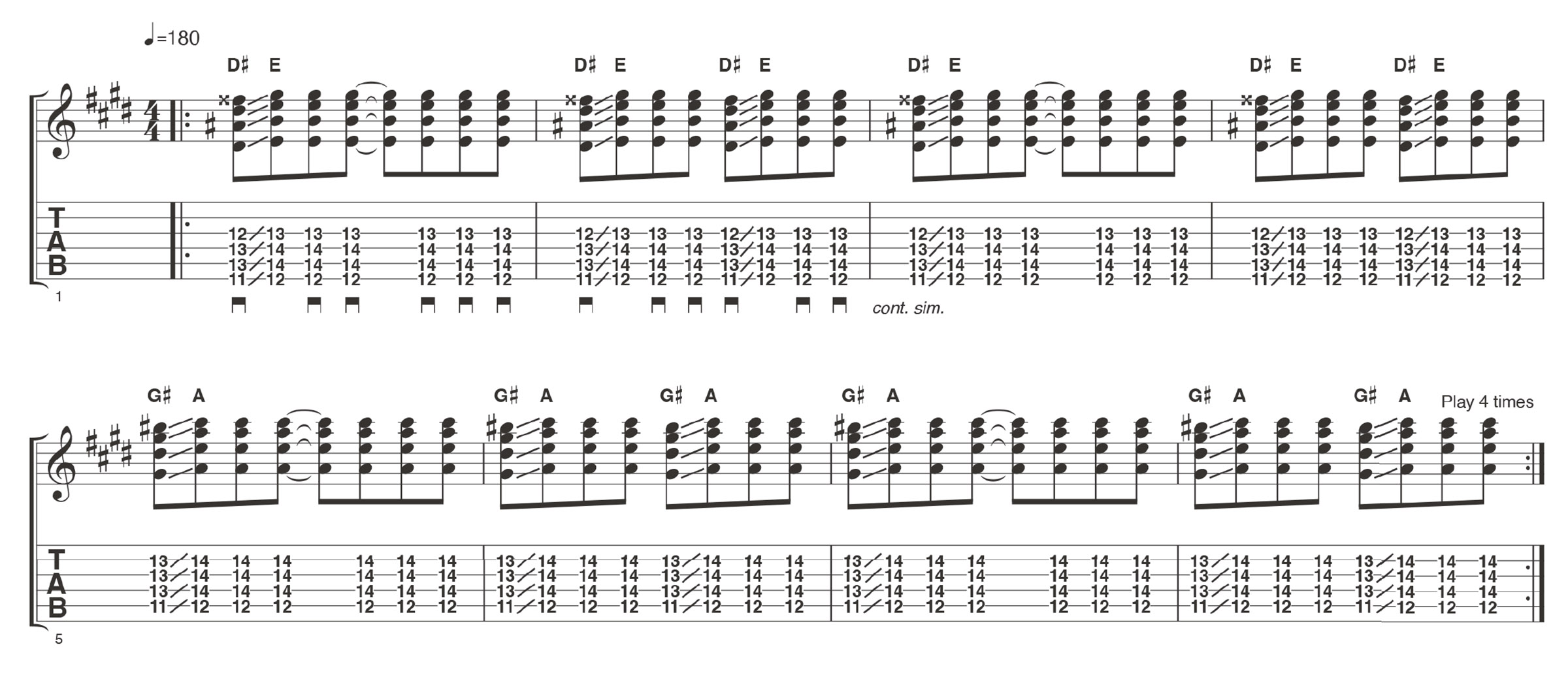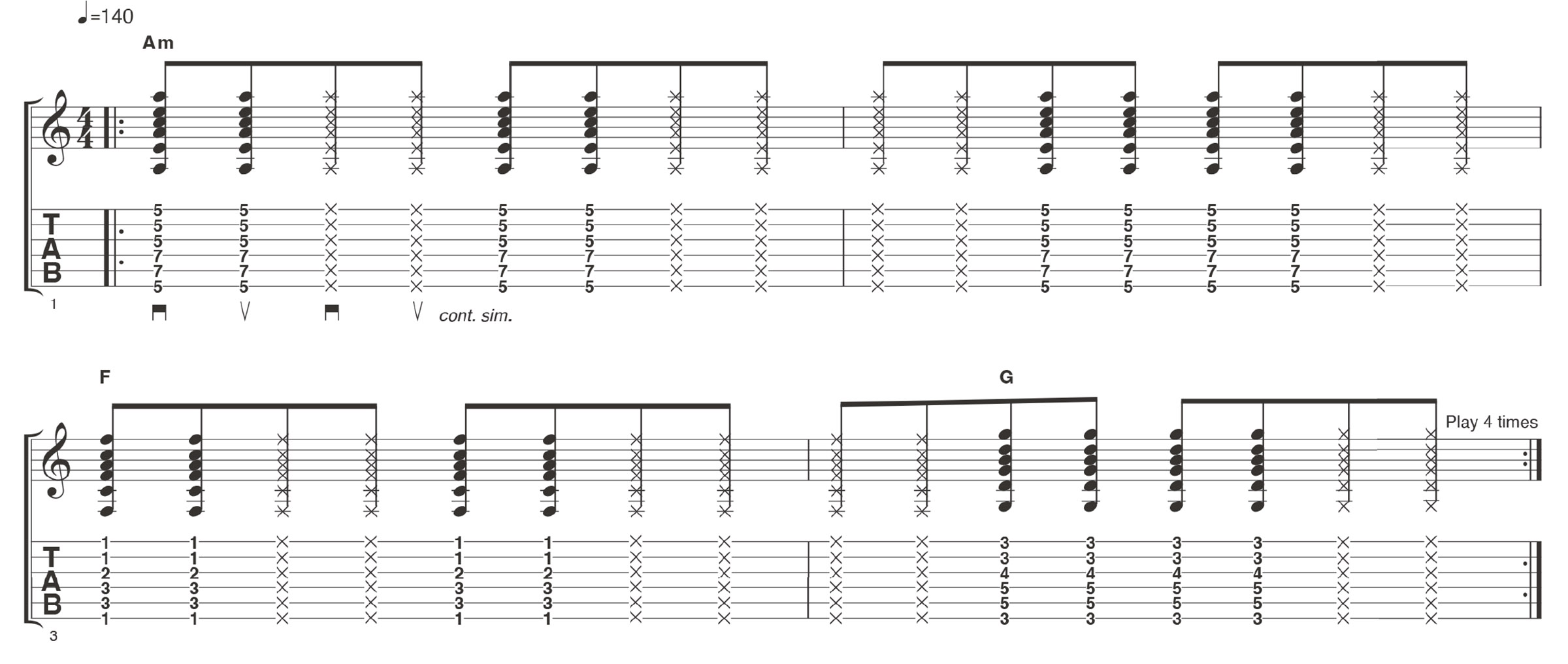
Punk is traditionally ensconced in a DIY ethic, from its “use what ya got” approach with gear to self-taught playing and musicianship. This was probably truer in the '70s heyday – and punk has come a long way since, spawning a raft of sub-genres.
We could list these, but perhaps the most telling fact is that pop-punk, post-punk, and more of those sub-genres are now all on their second or third revivals, with acts like Idles, Fontaines D.C., and Yungblud at the forefront today.
For us guitarists, there’s now greater musical history to draw on, and a lot more techniques to learn too. Our lesson here takes you through 10 examples which are loosely based around one or two artists apiece, but, more importantly, focus on the techniques you need to know to cover 50+ years of punk.
As ever, your aim is to improve your playing, so don’t worry if you don’t master each example in full. It’s all about identifying the bite-sized ideas that you’re not so familiar with, then adding them to your own arsenal of techniques.
Example 1. Offbeat chord changes

We’re kicking off in the style of US shock-punk rockers, Misfits, with a riff using barre chords from the key of B major and delivered in continuous eighth-note downstrokes.
Take careful note of where the chord changes appear. They’re played on the offbeat on several occasions, so, if you’re counting to four to keep time with the quarter-note pulse, the changes will appear in between the numbers.
Example 2. Sliding approach chord

Played with E and A major barre chords at the 12th fret, this riff is spiced up with a slide from a semitone below each chord, Johnny Ramone style.
It’s a technique that you’ll also hear on God Save The Queen by the Sex Pistols, amongst tracks by countless other acts.
Keep your hand and fingers fixed in the barre chord shape and focus on sliding each finger across the fret-wires at the same time.
Example 3. Chromatic riffing

This riff is something Black Flag’s Dez Cadena might play to create a spooky sound – an effect that comes from the chromatic arrangement of notes, instead of staying within the key signature.
Use your wrist and thumb to control the pick in an even alternate picking motion and use your four fretting fingers to span from the 5th fret down to the 1st. Stub your fretting fingers up against the idle strings to keep ’em quiet.
Example 4. Muted strumming

Add interesting rhythms to your strummed barre chords here by mixing full chords with muted strings in the style of Fall Out Boy’s Joe Trohman. For these mutes, hold the chord shapes with your fretting fingers and relax them so they are touching the strings but not pressing into the frets.
Note that the mutes don’t appear on the same beats in every bar – and you can experiment further with this idea.
Example 5. Green Day-style open string changes

Play rapid-fire Green Day-style chord changes by adding open string strums as you make the position shift.
Moving between two chords can be tricky at high tempos and quickly strumming the open strings in between chords is a good way of giving your fretting hand time to find the shape, as well as being a subtle but important nuance of punk rhythm playing.
Example 6. Pop-punk major melodies

This technique is a great way of creating an energetic, positive vibe like Tom DeLonge’s upbeat pop-punk style in Blink-182.
Here, we’re using the notes of E major (E F# G# A B C# D#) along the length of the first string, and using that repeating open E note (known as a pedal tone) to really root the lick in its intended key. Use alternate picking or try hammer-ons and pull-offs. It’s up to you.
Example 7. Ska feel

Focusing the rhythm guitar on beats 2 and 4 gives this riff a ska feel akin to Mick Jones on The Clash’s London Calling. Ska would overlap elsewhere in the genre with The Police’s post-punk style then later in the 90s with the ska-punk scene.
Our riff has a swung eighth-note feel which means longer downstrokes and shorter upstrokes.
Example 8. Dissonant bends

Mark Bowen of Idles creates striking guitar parts by employing dissonant string bends, sometimes on a single string and other times using unison bends. The idea here is to bend the lower string to match the pitch of the fretted higher string.
The slower you do it, the more dissonant and sour it will sound. You might say it’s a “classic rock” technique, but it’s used extensively in punk and its sub-genres too.
Example 9. Octave lick

We’re taking inspiration from East Bay Ray of Dead Kennedys and Dave Baksh of Sum 41 here. You’ll hear countless bands use octave shapes, though, filling out the sound of melody lines.
Play the lower note with your first finger and the higher note with your third or fourth, ensuring you keep the idle strings silent by resting your fretting fingers against them. Ideally, you should be able to strum without string noise.
Example 10. Yungblud-style single-note riff

This single-note Yungblud style riff uses the A natural minor scale (A B C D E F G) starting with the open fifth string.
After the root note, keep your hand steady and in position as you play the scale notes with your first, second, and fourth fingers.
Pick each note with a downstroke for an even, consistent attack, making sure you strike the string exactly when your fretting fingers land.







